Volcano Live
volcanolive.com
Mt Etna Volcano | John Seach

Sicily, Italy
37.73 N, 15.00 E,
summit elevation 3350 m
Shield volcano
Mt Etna is a stratovolcano located on the east coast of the island of Sicily, Italy. It is one of the most active volcanoes in the world, with a long history of eruptions dating back to ancient times. The volcano is characterized by a complex system of vents and craters, with activity that ranges from effusive eruptions to explosive eruptions.
The most recent eruptive activity at Mount Etna began in December 2019 and has continued to the present day. This activity has been characterized by explosive eruptions, ash emissions, and lava fountaining. Lava flows have also been observed on the volcano's flanks. This activity has been concentrated at the New Southeast Crater (NSEC), one of the volcano's summit craters. The volcano has been monitored closely by scientists, using various monitoring techniques such as ground deformation, gas measurements, and thermal imaging. This allows for the prediction of potential hazards and the evacuation of the population if necessary.
Mount Etna is a unique natural laboratory for the study of volcano dynamics and eruption processes. The volcano's activity provides valuable insights into the behavior of stratovolcanoes and the potential hazards they pose to nearby communities. Its frequent activity also makes it a popular destination for tourists, who can observe the volcano's activity up close with guided tours.
Mt Etna is the largest active volcano in Europe. It has an elliptical base (38 x 47 km) and a maximum elevation of about 3350 m. The volcano dominates the landscape of NE Sicily, Italy. The first eruptions at Etna occurred 500,000 years ago.
Mt Etna has the longest period of documented eruptions in the world. Etna is noted for the wide variety of eruption styles. The volcano is at its most spectacular when when both summit and flank eruptions occur simultaneously.
Mt Etna volcano photos by John Seach

John Seach at summit of Mt Etna. 800 m high lava fountain
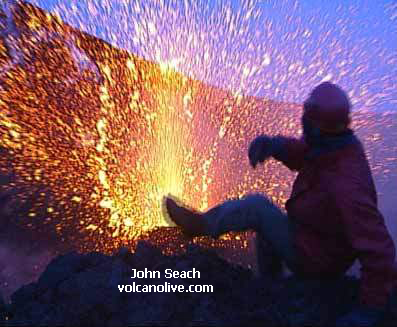
John Seach at Mt Etna volcano, fimed for Discovery Channel documentary 2000
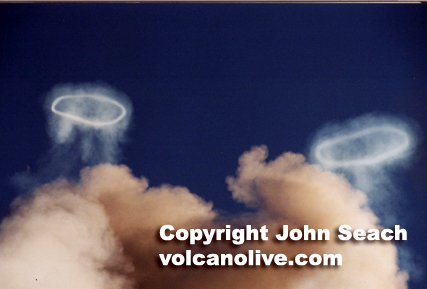
Mt Etna gas rings 2000
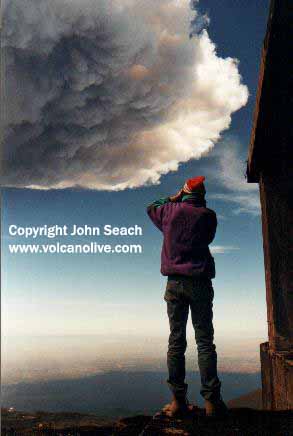 |
 |
Paroxysm, SE crater 2000
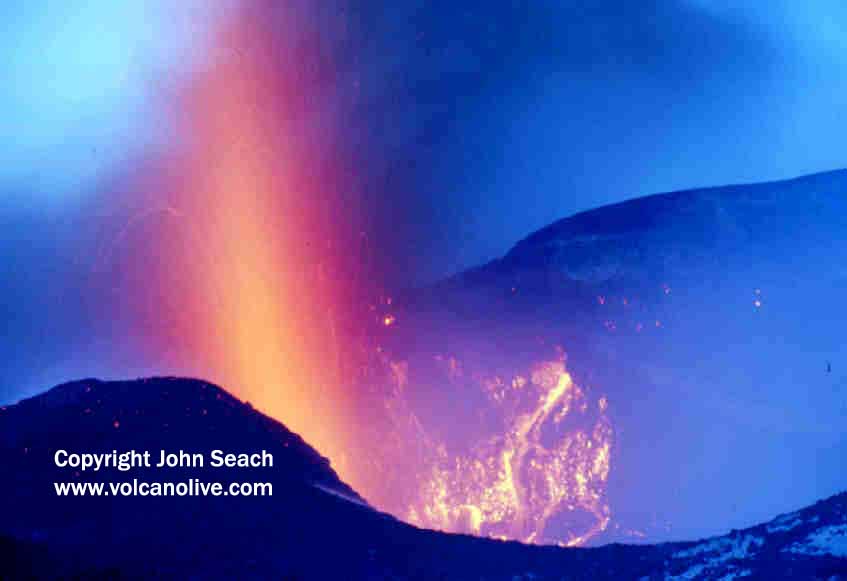
Bocca Nuova eruptions 1999
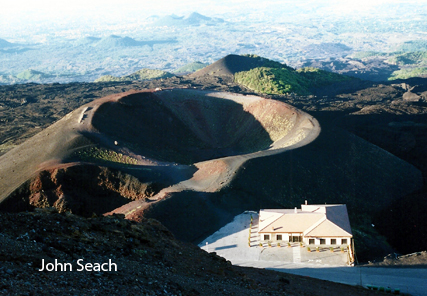
Sapienza, Etna
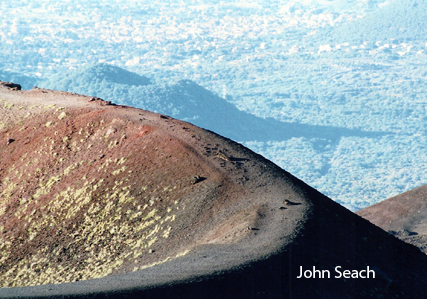
Mt Etna
The structure of Mt Etna consists of a series of nested stratovolcanoes, characterised by summit calderas, the most important one being the Ellittico Caldera, which formed about 14,000-15,000 years ago.
Historically Mt Etna has produced effusive activity; however several pyroclastic deposits related to Plinian eruptions have been identified in the Holocene sequence. Under open vent conditions, ash emission only occurs during flank eruptions of Mt Etna volcano.
Structural and seismic data indicate that the regional deformation in the Etnean
area is generally dominated by N-S compression as the result of subduction of the African tectonic plate under the Eurasian plate.
Further reading
Bonaccorso, A., Calvari, S., Coltelli, M., Del Negro, C. and Falsaperla, S., 2004. Mt. Etna: volcano laboratory. Washington DC American Geophysical Union Geophysical Monograph Series, 143.
Branca, S. and Del Carlo, P., 2004. Eruptions of Mt Etna during the past 3.200 years: a revised compilation integrating the Historical and stratigraphic records. In Mt. Etna: volcano laboratory. AGU.